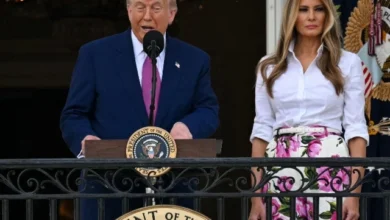Based on the information available up to August 25, 2024, here’s a comparison of Kamala Harris’s and Donald Trump’s energy policies:
**Kamala Harris’s Energy Policies:**
– **Support for Renewable Energy and Climate Action:** Kamala Harris has been associated with policies aimed at reducing greenhouse gas emissions and transitioning to cleaner energy sources. She co-sponsored the Green New Deal, which advocates for a significant overhaul of the economy to combat climate change, including transitioning from fossil fuels to clean technology. This approach suggests a policy direction towards increasing renewable energy use, potentially through subsidies, incentives, or mandates for clean energy.
– **Carbon Tax and Pollution Fees:** Harris has proposed a “climate pollution fee” to make polluters pay for emitting greenhouse gases, indicating a policy mechanism to reduce emissions through economic incentives.
– **Investments in Community Climate Action:** There’s mention of significant investment in community-based climate projects, aiming to fund local initiatives that enhance climate resilience and reduce carbon footprints at the community level.
– **Energy Independence with a Focus on Clean Energy:** While Harris has claimed record energy production and energy independence, the focus seems to be on transitioning this production towards cleaner, more sustainable sources, aligning with her broader climate goals.
**Donald Trump’s Energy Policies:**
– **Promotion of Fossil Fuels:** Trump’s policies have historically favored the expansion of fossil fuel production, particularly through deregulation and encouraging domestic oil and gas exploration, including fracking. His approach emphasizes energy independence through increased domestic production of oil and gas.
– **Critique of Climate Policies:** Trump’s administration was known for rolling back environmental regulations aimed at combating climate change, arguing that such regulations hinder economic growth. His policies would likely continue to support fossil fuel industries over renewable energy, potentially reversing or not enforcing policies like the Green New Deal or significant climate-related investments.
– **Economic Focus Over Environmental:** Trump’s energy plan, as described by supporters, focuses on reducing energy costs through increased domestic drilling, aiming to lower prices for consumers and reduce reliance on foreign oil, which he sees as more beneficial for the economy than policies aimed at climate change.
**Comparison:**
– **Philosophical Divide:** The fundamental difference lies in their approach to energy and climate. Harris leans towards policies that aggressively combat climate change through regulation, investment in renewables, and economic mechanisms like carbon taxes. Trump, conversely, prioritizes economic benefits from fossil fuels, advocating for less regulation and more production.
– **Economic Impact:** Trump’s policies might appeal to those concerned with immediate energy costs and job creation in traditional energy sectors. Harris’s policies, while potentially increasing short-term costs, aim for long-term environmental sustainability and job creation in new, green industries.
– **Energy Independence:** Both claim to support energy independence, but through different means. Harris’s approach involves diversifying energy sources towards sustainability, while Trump focuses on maximizing fossil fuel output.
– **Public Sentiment:** From X posts, there’s a clear divide in public sentiment, with Trump’s supporters emphasizing economic benefits and energy cost reduction, while Harris’s policies are critiqued for potentially increasing costs but praised for environmental stewardship.
This comparison reflects a broader ideological debate between economic growth through traditional energy means versus sustainable development through renewable energy and climate action.






